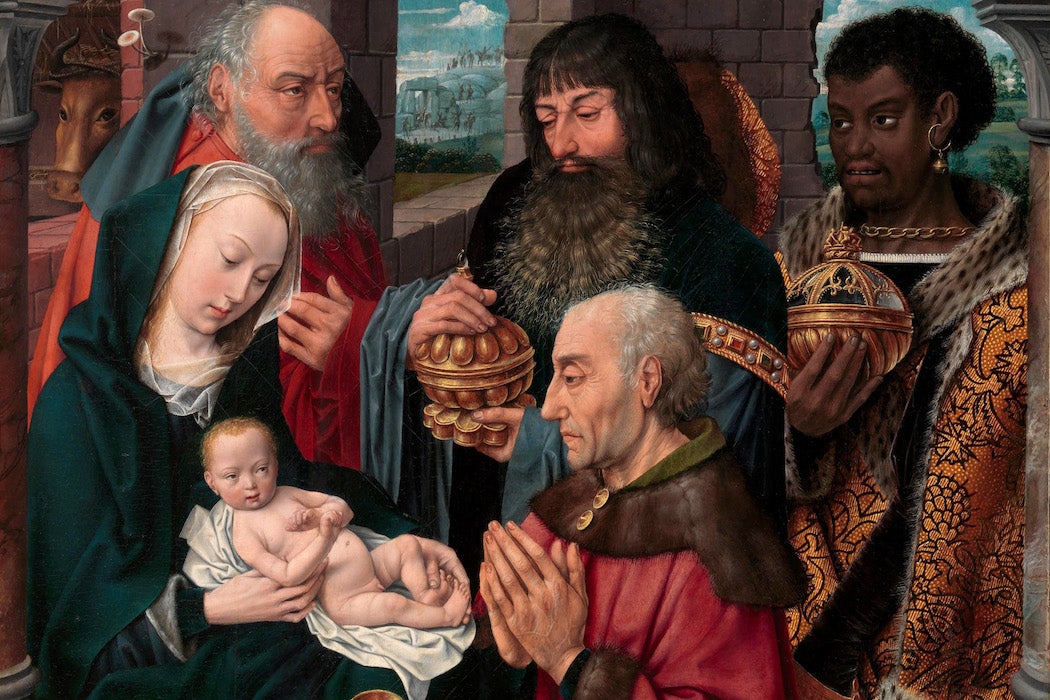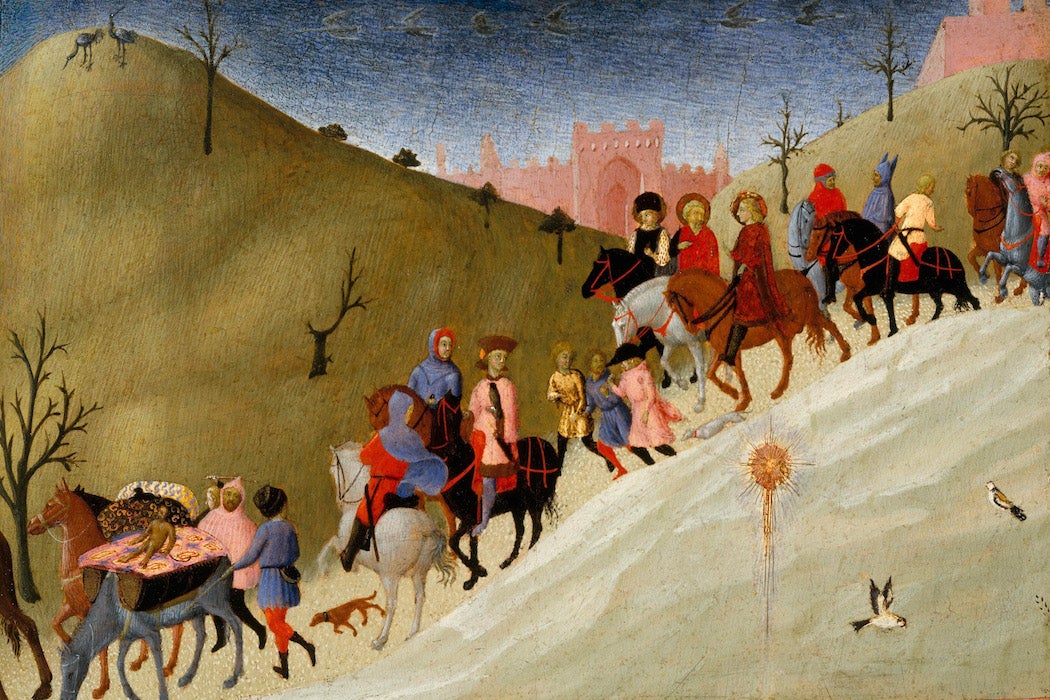If you haven’t yet finished your holiday shopping, chances are you are aware, more so than usual, of issues with the global supply chain. Whether it’s shipping delays, container shortages, or workforce disruption, we have all become armchair experts in the logistics of delivery.
The myths around Christmas have always been lessons in supply chain management. The three wise men (or Magi) bring to the manger gold, frankincense, and myrrh: tokens of kingship, divinity, and humanity, and of wealth gathered from the ends of the earth. Frankincense, an expensive fragrance, came from India and Arabia; myrrh, an embalming oil, came from bushes in Ethiopia and Arabia. While Christmas shopping as we know it began in the early nineteenth century, gift-giving has long been part of the holiday imaginary, and Santa Claus’ sleigh ride across the globe now offers an optimistic vision of a world unified by the economies of transportation—a vision that the COVID-19 pandemic is both exposing and unraveling.
Weekly Newsletter
Casper, Balthazar, and Melchior, the biblical Magi, bring goods symbolic of the exotic lands they come from, and they carry their precious cargo with them, like diplomats presenting gifts at a state visit. On the other end of the mythical spectrum, Santa Claus relies on local production, low rent, and cheap labor, and a healthy dose of magic, to deliver gifts to the good boys and girls of the world.
Neither story hints at the complexities of consumer purchasing decisions, procurement of raw materials, production, shipping, or distribution. In their simplicity, these stories not only help us celebrate the holidays, but also let us remain blissfully ignorant about the human cost, technological effort, and environmental harm done by the production and distribution of our gaily wrapped presents. Even more insidiously, they allow us to imagine the West as the focal point of a network of economic exchange, serviced by exotic or magical beings who are happily laboring to provide us with luxuries.
In his article “Provincializing Rome: The Indian Ocean Trade Network and Roman Imperialism,” the historian Matthew Fitzpatrick takes the Romans to task for their economic duplicity. Though the Roman empire often directed its expansion to maximize economic opportunity and consolidate control, aristocratic Romans regularly railed against the vice of luxury, and cast their motivations in terms of glory and treaty obligations instead of profit.
But however economically minded the Roman empire was, Fitzpatrick argues that it was unable to dictate the terms of global trade, racking up a trade deficit that it sustained through the enormous spoils of conquest. The real economic hotspot was instead to the east, specifically the Indian subcontinent, which connected the western zones of the Mediterranean to the markets of far east Asia. Although classicists since at least Polybius (a Greek historian of the Hellenistic period) like to imagine the Roman empire as the center of the world, accounts of ancient trade networks tell a different story.

While Rome imported pepper, ivory, semi-precious stones, silks, and cotton—luxuries all—its main export was metals, both the gold and silver of its coinage and the tin and iron of its western mines. And while archaeological evidence shows abundant Roman trade on both coasts of the subcontinent, Indian merchants were less keen to make the return journey, and rarely travelled past Egypt. When merchants from Sri Lanka (Taprobane) did visit the emperor Claudius (10 BCE to 54 CE), they informed him that Sri Lanka was much richer than Rome. From this global perspective, the Roman empire was not the core of this economic space, but a province, the terminus of the western arm of global trade.
Such global perspectives put the lie to the happy image of the Santa myth: we may be importing vast quantities of consumer goods—and consumer luxuries—but the center of economic power has long shifted elsewhere. Even more so, the supply shortages introduce us to the people and places that service global commerce: from the enormous global impacts of the Ever Given container ship blocking the Suez Canal to the rising cost of container shipping, we are all learning the details and textures of a world once easily ignored.
The supply chain “broke” when Chinese manufacturing outpaced the global trade network’s ability to feed the factories with raw material or distribute its outputs, and shortages are predicted through 2023. Christmas morning may well require a heftier dose of magic this year. The Romans would have sympathized: the poet Martial’s list of Saturnalia gifts includes pepper from India, ivory from Africa, parchment from Egypt, and balsam from the Levant. Even the Magi might have balked.







